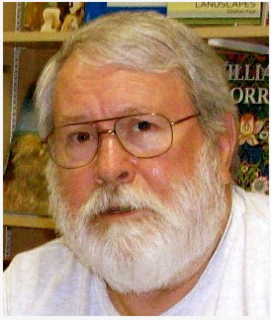The Quaker Tapestry consists of 77 panels illustrating the history of Quakerism from the 17th century to the present day. The idea of Quaker Anne Wynn-Wilson, the tapestry has a permanent home at the Friends Meeting House at Kendal, Cumbria, England.

The Battle of Brandywine, also known as the Battle of Brandywine Creek, was fought between the American Continental Army of General George Washington and the British Army of General Sir William Howe on September 11, 1777, as part of the American Revolutionary War (1775-1783). The forces met near Chadds Ford, Pennsylvania, as Howe moved to take Philadelphia, then the American capital. The British forces routed the Continental Army and forced them to withdraw, first, to the City of Chester, Chester, Pennsylvania, and then northeast toward Philadelphia. More troops fought at Brandywine than any other battle of the American Revolution. It was also the longest single-day battle of the war, with continuous fighting for 11 hours.

Elizabeth Fry, sometimes referred to as Betsy Fry, was an English prison reformer, social reformer and, as a Quaker, a Christian philanthropist. She has been called the "angel of prisons".

Allegany State Park is a state park in western New York State, located in Cattaraugus County just north of the Allegheny National Forest in Pennsylvania. The park is divided into two sections: The Red House Area and the Quaker Run Area. It lies within the Allegheny Highlands forests ecoregion.

Charles Eugene Fager, known as Chuck Fager, is an American activist, an author, an editor, a publisher and an outspoken and prominent member of the Religious Society of Friends or Quakers. He is known for his work in both the Civil Rights Movement and in the Peace movement. His written works include religious and political essays, humor, adult fiction, and juvenile fiction, and he is best known for his 1974 book Selma 1965: The March That Changed the South, his in-depth history of the 1965 Selma Voting Rights Movement which led to the passage of the Voting Rights Act.

The first Quaker Meeting House in Salem, Massachusetts was built during the autumn of 1688 by Quaker Thomas Maule. Much of the building was constructed using old timber repurposed from other buildings.

The Township of Norwich is a municipality located in Oxford County in Southwestern Ontario, Canada. The preferred pronunciation of the town name is NOR-witch, which differs from the pronunciation NORR-ij used for the city of Norwich, England. The origin of Norwich, Ontario, is more likely Norwich in upper New York State, the area from which the pioneering families emigrated in the early 19th century, where the community was known as Norwichville.

A Friends meeting house is a meeting house of the Religious Society of Friends (Quakers), where meeting for worship is usually held. Typically Friends meeting houses do not have steeples.
Quilts of the Underground Railroad describes a controversial belief that quilts were used to communicate information to African slaves about how to escape to freedom via the Underground Railroad. It has been disputed by a number of historians.

Mark Trafton was a Methodist Episcopal minister who, as a member of the American Party served one term as a U.S. Representative from Massachusetts.
The following events occurred in November 1971:

Upperville Meeting House is a historic Friends meeting house on New York State Route 80 in Upperville, Chenango County, New York. It was built in 1896 and is a one-story rectangular wood frame building on a dressed stone foundation. It is built into a hillside.

The Essex Institute (1848–1992) in Salem, Massachusetts, was "a literary, historical and scientific society." It maintained a museum, library, historic houses; arranged educational programs; and issued numerous scholarly publications. In 1992 the institute merged with the Peabody Museum of Salem to form the Peabody Essex Museum.

James Beach Moore was born into a Canadian Quaker family.

The Newtown Square Friends Meeting House is a historic Quaker meetinghouse in Newtown Square, Pennsylvania, United States, built in 1711 and expanded in 1791 and 1891. It has housed, and continues to house, Quaker meetings for worship for over 300 years.
The Northeast Classic Car Museum is a not-for-profit educational facility in Norwich, New York that collects, preserves, interprets and exhibits vehicles related to the evolution of transportation, with particular emphasis on the role of the automobile and its impact on American culture.
Martha Neill Upton was a watercolorist, sculptor and studio quilt artist. Her quilted tapestries helped quilts become seen as fine art, rather than craft work, during the early 1970s. Her quilts were shown in the first major museum exhibition of non-traditional quilts, The New American Quilt at New York's Museum of Arts and Design, then called the Museum of Contemporary Craft, in 1976.

Chester Friends Meetinghouse is a Quaker meeting house at 520 East 24th Street in Chester, Delaware County, Pennsylvania, United States.














